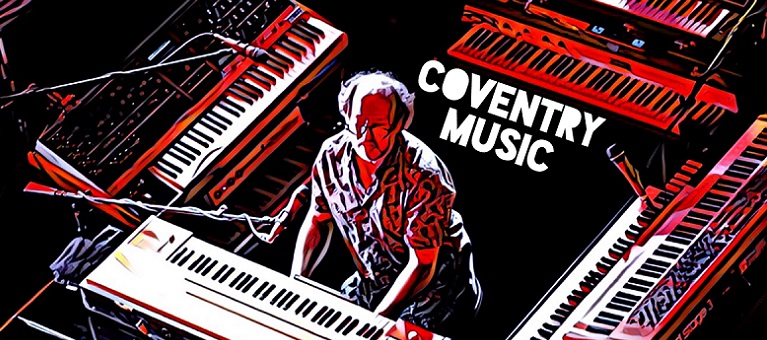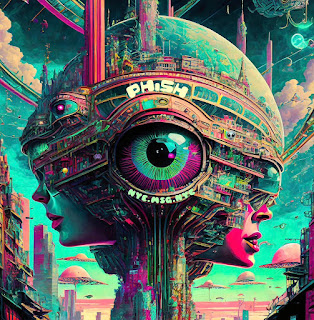Krautrock: Cluster, Cluster II (1972)
In any case, within the Krautrock kaleidoscope there’s a subcategory of electronic and/or synth-based music such as represented by groups like Tangerine Dream, Kraftwerk, Cluster, and others. Some prefer to carve these mechanized maestros away and set them outside the Krautrock circle, keeping bands that tend to feature (mostly) prog-rock instrumentation like Amon Düül, Can, Faust, and Neu! positioned at the center.
I’m not one to fuss too greatly over where the lines are drawn, usually inclined instead just to consider as Krautrock just about any music made in Germany during the late 1960s and 1970s that cannot readily be described as “Schlager” -- that is, the inoffensive, lightweight pop that often filled the German charts during those years.
Many Krautrock acts had a dim view of Schlager, thinking of it as mindless and redundant, and were thereby motivated to shun the traditional forms and themes exhibited by it. And while some Krautrockers certainly absorbed Anglo and American influences (blues, rock, jazz), others very deliberately eschewed those influences as well, wanting to create something entirely new and seemingly untouched by other influences.
Worth noting here as well was the country’s troubled, horrific political history which for many young adults discouraged any identification with their own nation’s past. Some of these artists pointed back to Germany’s “stunde null” or “hour zero,” a reference to the moment World War II concluded and the start of an entirely new Germany disconnected from its former Nazi-led state.
This idea of an absolute break with the past was sometimes reflected in the free-form, experimental music some of these acts created, with the electronic tradition being especially inviting given its relative newness and the lack of history or set of common practices. The band Cluster -- essentially the duo of Dieter Moebius and Hans-Joachim Roedelius -- is our first example of such technological trailblazers from Germany who helped shape the modern era of electronic music.
To step back just a bit, we should mention that pair’s earlier work with another important figure in German electronic music, Conrad Schnitzler, in a band similarly (and confusingly) named Kluster. First forming at the short-lived though influential and fertile Zodiac Arts club in Berlin, as a trio they made three LPs in short succession at the start of the ’70s, each of which is innovative and interesting.
Klopfzeichen (1970), recorded at the same time as Tangerine Dream’s debut Electronic Meditation (on which Schnitzler also appears) emphasizes percussion and voice. Zwei-Osterei (1971) provides an eerie soundtrack to a dramatic reading of a nonsensical text Schnitzler claimed sounded better if you didn’t know German. And finally, Eruption omits the spoken word entirely, instead mixing organ, cello, electric guitar, tape effects, percussion, and feedback in rhythmically pleasing ways.
All three Kluster LPs originally had very limited pressings (just 200 or 300 copies), though were reissued on CD in the 1990s and found their way online not long after that, making them much more accessible.
Schnitzler then moved on, leaving Moebius and Roedelius to start afresh as Cluster, with producer Conrad Plank initially listed as a new third member. The debut was released in 1971 by a label run by the Dutch electronics company Philips whose list of acts included early Kraftwerk plus an eclectic variety of pop and classical acts from around the world.
Cluster (or Cluster ’71, as it sometimes appears) features a more cinematic and expansive sound than is found on the sometimes claustrophobic Kluster LPs, its resonating waves smoothly progressing from one “scene” to the next in intuitive, logical-seeming ways. That the tracks are titled after their lengths (“15:33,” “7:38,” “21:17”) further underscores the tendency toward abstraction.
Cluster then signed with Brain Records of Hamburg run by a couple of artists & repertoire guys who’d defected from the popular Krautrock label Ohr. Though only active for five years, Brain would issue numerous Krautrock classics including releases by Neu!, Harmonia, Klaus Schulze, all Popol Vuh who all also appear among the “50 Kosmische Classics.”
For Cluster II, Moebius and Roedelius presented themselves as a duo with Plank being listed as a producer and earning co-writing credits for all six of the tracks.
The mechanical, ominous “Plas” kicks it off, sounding like a dark, disorienting ride through an underground mine shaft with the mix of sounds disorienting your sense of near and far. The almost 13-minute “Im Süden” follows, featuring distorted, menacing guitars marching through a repetitive though slowly evolving dirge that ultimately resolves into a quiet, industrial wasteland. The first side then ends with the short “Fur die Katz” (“for the cat”), a collage of effects, modulated guitars, and electronic purring.
The second side begins with the almost 15-minute “Live In Der Fabrik” (“live in the factory”) featuring a rapid rhythm that mimicks some sort of futuristic production line. “Georgel” follows, a spooky experiment with organ and tape manipulation. The noisy cacophony of “Nabitte” (“there you are”) then provides a rapid postlude.
There something remarkably stimulating -- both intellectually and emotionally -- about both the Kluster records and these early Cluster LPs. It’s all very different from the other Krautrock we’ve covered, and indeed different from much else happening at the time.
That’s the point, of course, although soon enough many other artists would start to cluster around Moebius and Roedelius and demonstrate their influence for many years to come.




Comments